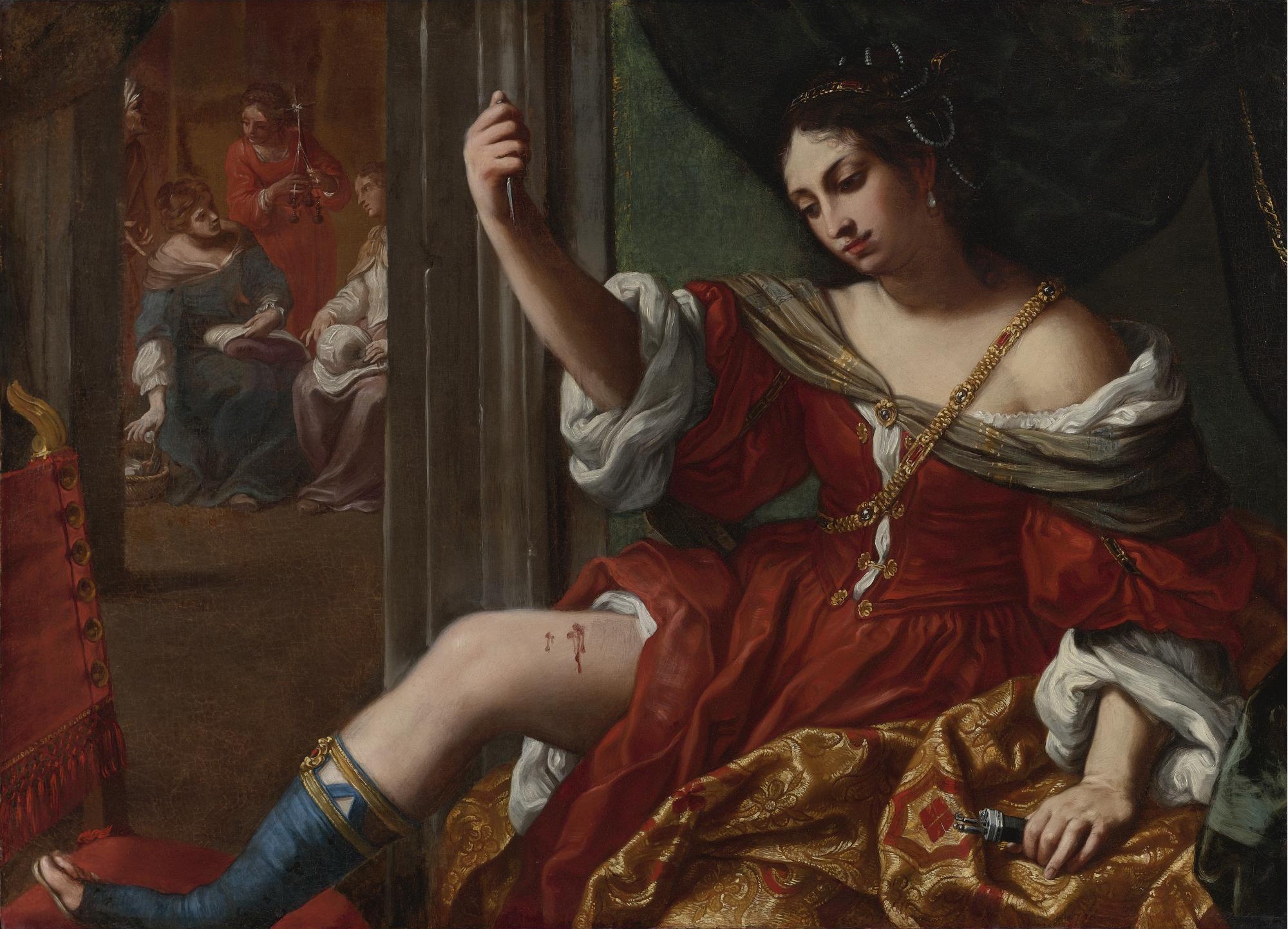Elisabetta Sirani was an Italian Baroque painter and printmaker. She was quite successful in her short life; she was the most famous woman artist in Bologna, and founded an academy for women artists. Sirani was trained by her father, who had been a student of Guido Reni and was an established painter in the Bologna school. When her father became incapacitated, she took over his workshop and studio at age sixteen. She immediately became immensely successful. Her success was made easier by the fact that Bologna was more progressive than other Italian cities and readily welcomed women artists. In addition to success with her own paintings, she trained a number of other painters, including some men and over a dozen women (including her younger sisters).
Sirani painted, among other works, portraits, religious paintings, including the popular story of Judith and Holofernes, and a self portrait showing herself as the allegory of painting. Portia Wounding Her Thigh is a scene from Roman history. Portia Catonis was the wife of Brutus and some scholars believe she may have been involved in the plot to kill Julius Caesar, or at the very least was the only woman to know about it beforehand. The scene illustrated here comes from Plutarch, who writes that she came upon her husband pondering the assassination but he would not confide his troubles to her, for fear that she would reveal the plot under torture. To prove her ability to withstand physical pain, Portia cut her thigh and suffered in silence for a day (despite chills and fever). She then returned to her husband with proof that she could keep her secrets.
It could have been a political painting for Sirani, probably meant to show the lengths women must go to in order to be taken seriously.


 Elisabetta Sirani
Elisabetta Sirani